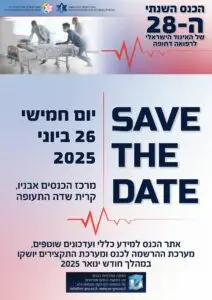פוסט זה זמין גם ב:
עברית
Gabor D. Kelen,Amy H. Kaji,Kraftin E. Schreyer,Leah B. Colucci,Samuel M. Keim,Sandra M. Schneider,Robert E. Suter,Richard J. Hamilton,Arlene S. Chung,David Foster,Monisha Dilip,Thuy Nguyen,Hamza Ijaz,Wendy W. Sun,Ali S. Raja
Mitigating patient harm is paramount for all engaged in medical practice. Accurate identification of root causes of medical errors is critical but requires appropriate methodology and sound analysis. Recently, the Agency for Healthcare Research and Quality (AHRQ) released a 744-page systematic review of diagnostic errors in the emergency department (ED).1 This report received significant national mainstream and social media attention. Although seemingly concerned with only emergency medicine (EM), there are broad implications for all medical specialties and patient safety studies. This report exemplifies how unsound scientific methods lead to unsupportable findings and can thus cast aspersion on any medical discipline.
Unchallenged, the AHRQ report may stand as an accepted reference standard for years. Although there are multiple deficiencies (Table), we proffer a constructive critique of key flaws that, in our opinion, largely nullifies the AHRQ report’s findings. Our commentary focuses on 2 major shortcomings. The first is the failure to formulate a meaningful set of questions that apply to emergency practice. The second is the use of a highly suspect analysis of limited and inappropriate sources to arrive at an improbable set of conclusions. Thus, the report represents a type IV error—getting the wrong answer to the wrong question. Dramatic inferences, however flawed, once in the public domain may potentiate greater harms than it seeks to prevent and mislead future research direction and mitigation strategies. We hope this brief commentary helps guide patient safety researchers in honing research questions appropriate for a specific field of study, concentrate on systems effects rather than individual failings, and eschew the use of weak data/sources to arrive at conclusions.







